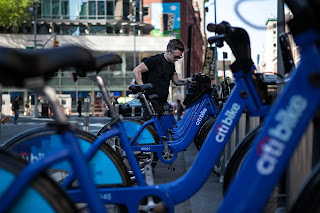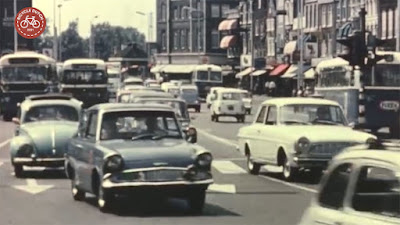If someone rolls a bicycle over someone else's head, could that be construed as excessive use of force?
Hmm...I must admit I'd never pondered that question. Most likely, there aren't very many people who have. One who had to is Andrew Myerberg.
He is the director of Seattle's Office of Police Accountability (OPA). The poor fellow who got tire tracks on his forehead was Camillo Massagli, who was known for showing up at street protests and playing his trumpet. At one of those events last year, held in the wake of a grand jury's decision not to indict Louisville police officers in the killing of Breonna Taylor, Seattle PD Officer Eric D. Walter rolled his Department-issued bike--with two flat tires--over a supine Massagli's head.
Massagli, for his part, declined to pursue charges because, he explained, "I cannot use a penal system I reject for revenge, not in good conscience," though he added that Walter's and other officers' actions showed "disregard for human life."
King County Sheriff's Detective Mike Mellis investigated Walter for assault but did not find probable cause. He reasoned that Walter and other officers had a right to "peacefully" remove protesters from the street. Although he conceded that Walter "purposely rolled his bike over" Massagli's head, as recounted in an OPA summary, he said that such an action "would not necessarily be expected to cause someone pain."
Okay...I'll try that if I ever roll a bicycle over someone's head: "Officer, I really meant no harm!"
At least Mellis, Walter and the officers who worked with him weren't the only ones who had input on the OPA summary. It didn't dispute Walter's claim that that he "needed to stay on his line and could not move as it might confuse the officers following behind him." It, however, averred that a review of video from that day found "no indication that he ever lifted the bicycle while walking over" Massagli.
So what was the result of this investigation? Walter got a seven-day unpaid suspension. (It's unclear as to whether or not he's served it.) Walter and the union are, of course, appealing it. As a 14-year veteran of the force, Walter had a base salary of $130,471 in 2020 and made another $20,544. (I wonder whether working that protest was part of his regular salary or overtime.) So the suspension, should or has he served it, would cost him about $2509 of his base pay. One wonders whether Massagli will pay in some other way--whether through physical pain or emotional trauma, now or in the future, whether or not Officer Walter meant to hurt him.
 |
| Screen grab from a video at the protest. (Courtesy of C.J Halliburton and Joey Weiser, for the Seattle Times. |





















